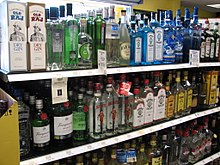**Historical Development of Gin:**
– The name ‘gin’ is derived from the Latin word for juniper, ‘juniperus.’
– Jenever, genièvre, and jenever are related terms for gin.
– Jenever was consumed for its calming effects before battle in the 17th century.
– Gin emerged in England in various forms by the early 17th century.
– The Gin Craze in England occurred from 1695 to 1735.
– The negative reputation of gin led to the Gin Act of 1736 and subsequent regulations.
– Gin production evolved over the 19th and 20th centuries with new techniques and styles.
**Gin Production and Legal Definitions:**
– Different styles like Korenwijn and Geneva gin represent traditional pot-distilled gins.
– Gin can be aged in tanks or casks, giving it a malty flavor similar to whisky.
– Some gins have protected geographical indications like Plymouth gin and Sloe gin.
– Classic styles like Old Tom gin are culturally recognized but not legally defined.
– EU regulations allow the term ‘sloe gin’ without the liqueur suffix in specific cases.
– Juniper-flavored spirit drinks must be at least 30% ABV.
– London gin is made with specific regulations including minimum ABV and flavor requirements.
**Flavouring and Chemical Composition of Gin:**
– Popular botanicals for gin include citrus elements like lemon and bitter orange peel.
– Spices like anise, angelica root, cardamom, and more are used in gin production.
– Chemical compounds like geraniol, euganol, sabinene contribute to gin’s flavor.
– Juniper berries provide juniper monoterpenes, while citrus and berry flavors come from limonene.
– In 2018, over half of UK Gin category growth was from flavored gin.
**Industry Trends and Growth:**
– Since 2013, gin has seen global growth with new brands and products.
– Innovation and competition have led to a period of change in the gin industry.
– Flavored gin has significantly contributed to sector growth.
– Market trends indicate a growing demand for gin products.
– Consumer preferences drive the evolution of gin products.
**Consumption and Cultural Significance of Gin:**
– Gin has a rich history dating back centuries and has played a significant role in social and cultural contexts.
– The consumption of gin has seen a resurgence in recent years.
– Originating in Europe, gin has evolved over time, leading to various styles and flavors.
– Gin was used in British colonies to mask the bitter taste of quinine in tonic water.
– Sloe gin is made by infusing sloes in gin, while Pimms No.1 Cup is a popular gin-based liqueur.
Gin (/dʒɪn/) is a distilled alcoholic drink flavoured with juniper berries and other botanical ingredients.
 A selection of bottled gins for sale in Georgia, United States, 2010 | |
| Type | Distilled alcoholic drink |
|---|---|
| Introduced | 13th century |
| Alcohol by volume | 35–60% |
| Proof (US) | 70–140° |
| Colour | Clear |
| Ingredients | Barley or other grain, juniper berries |
| Related products | Jenever |
Gin originated as a medicinal liquor made by monks and alchemists across Europe. The modern gin was modified in Flanders and the Netherlands to provide aqua vita from distillates of grapes and grains, becoming an object of commerce in the spirits industry. Gin became popular in England after the introduction of jenever, a Dutch and Belgian liquor. Although this development had been taking place since the early 17th century, gin became widespread after the 1688 Glorious Revolution led by William of Orange and subsequent import restrictions on French brandy. Gin emerged as the national alcoholic drink of England during the so-called Gin Craze of 1695–1735.
Gin is produced from a wide range of herbal ingredients in a number of distinct styles and brands. After juniper, gin tends to be flavoured with herbs, spices, floral or fruit flavours, or often a combination. It is commonly mixed with tonic water in a gin and tonic. Gin is also used as a base spirit to produce flavoured, gin-based liqueurs, for example sloe gin, traditionally produced by the addition of fruit, flavourings and sugar.
